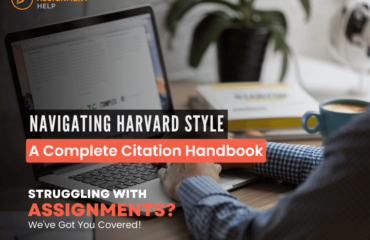
Table of Contents
Writing a literature review can be a daunting task, especially for students who are new to academic writing. However, with the right approach and a clear understanding of the process, you can create a comprehensive and insightful literature review. This literature review writing guide will walk you through the steps to write a literature review, offering valuable tips and best practices along the way. Whether you’re preparing a literature review for a university assignment or a research project, this guide will help you navigate the process with ease.
Introduction
A literature review is a critical summary of existing research on a particular topic. It involves analyzing, evaluating, and synthesizing scholarly articles, books, and other sources to provide an overview of what is currently known about the subject. The purpose of a literature review is to identify gaps in the existing research, establish the context for your own work, and demonstrate your knowledge of the field. In this guide, we’ll cover everything you need to know about writing a literature review, from planning and researching to drafting and revising.
Planning Your Literature Review
Understanding the Assignment
Before you start your literature review, it’s important to fully understand the assignment requirements. Each literature review may have different expectations depending on the course or project. Clarify the scope, length, and format of the review with your instructor. Knowing what is expected will help you plan your research and writing process more effectively.
Defining Your Research Question
A well-defined research question is the foundation of a successful literature review. It guides your research and helps you stay focused. Start by identifying the main topic of your review and then narrow it down to a specific question or set of questions. Your research question should be clear, concise, and directly related to the subject you are studying.
Conducting Preliminary Research
Once you have a research question, begin by conducting preliminary research to familiarize yourself with the existing literature. Use academic databases, libraries, and online resources to find relevant sources. Keep track of your findings and take notes on key points, methodologies, and gaps in the research. This initial research will help you gain a broad understanding of the topic and identify the most important sources for your review.
Gathering and Organizing Sources
Selecting Relevant Sources
The next step is to select the most relevant sources for your literature review. Look for high-quality, peer-reviewed articles, books, and other scholarly materials. Consider the credibility of the authors, the publication date, and the relevance to your research question. Aim to include a variety of sources to provide a comprehensive overview of the topic.
Annotating Your Sources
As you gather your sources, take the time to annotate them. Annotations are brief summaries and evaluations of each source. They help you keep track of the key points and how each source relates to your research question. Annotated bibliographies can be an invaluable tool when it comes to organizing your thoughts and structuring your literature review.
Creating an Outline
An effective literature review starts with a well-organized outline. This will serve as a roadmap for your writing and ensure that your review is coherent and logical. Start by grouping your sources into themes or categories based on their content. Then, create headings and subheadings for each section of your review. Your outline should include an introduction, main body, and conclusion.
Writing the Literature Review
Introduction
The introduction of your literature review should provide an overview of the topic and explain the purpose of the review. Begin with a broad statement about the subject and then narrow down to your specific research question. Explain the scope of your review and why the topic is important. This section should also outline the structure of the review, giving readers a roadmap of what to expect.
Thematic Organization
In the main body of your literature review, organize your sources thematically. Each section should focus on a different theme or aspect of the topic. Begin each section with a clear heading that describes the theme. Summarize and synthesize the findings from your sources, highlighting the main points and how they relate to your research question. Use transitions to connect the themes and ensure a smooth flow between sections.
Critical Analysis
A key part of a literature review is the critical analysis of the sources. Don’t just summarize the content; evaluate the strengths and weaknesses of each source. Discuss the methodologies used, the validity of the findings, and the significance of the results. Identify any gaps in the research and suggest areas for future study. Your critical analysis will demonstrate your understanding of the topic and your ability to engage with the existing literature.
Synthesis of Information
Synthesis involves combining information from multiple sources to create a cohesive narrative. Rather than discussing each source individually, integrate the information to show how the sources collectively contribute to your understanding of the topic. Highlight agreements, disagreements, and trends in the research. A well-synthesized literature review provides a clear and comprehensive overview of the existing knowledge on the subject.
Revising and Finalizing
Reviewing for Coherence and Flow
After writing your literature review, take the time to review it for coherence and flow. Ensure that each section logically follows from the previous one and that your ideas are clearly communicated. Check for smooth transitions between paragraphs and sections. A well-organized review will be easier for your readers to follow and understand.
Checking for Errors
Proofread your literature review for grammar, punctuation, and spelling errors. Ensure that your writing is clear and concise. It’s also important to check for proper citation and referencing. Use a consistent citation style as specified by your instructor or the guidelines of the publication you are submitting to. Proper citation will give credit to the original authors and avoid issues of plagiarism.
Getting Feedback
Before finalizing your literature review, seek feedback from peers, instructors, or mentors. They can provide valuable insights and suggest improvements. Consider their feedback carefully and make necessary revisions. Getting a fresh perspective on your work can help you identify areas that need clarification or enhancement.
Conclusion
Writing a literature review is a critical skill for students and researchers. By following this literature review writing guide, you can approach the task with confidence and create a thorough and insightful review. Remember to define your research question, gather and organize your sources, and critically analyze and synthesize the information. With these easy steps for literature review writing, you’ll be well-prepared to tackle any literature review assignment.
We hope this guide to writing literature reviews has been helpful. If you have any questions or additional tips to share, please leave a comment below. Your feedback is valuable to us and can help other readers improve their literature review writing techniques. Happy writing!
By following this comprehensive guide, you’ll be able to navigate the complexities of literature review writing with confidence. Whether you’re writing a literature review for a university assignment or a research project, these steps will help you produce a high-quality review that meets academic standards. Remember, the key to a successful literature review is thorough research, critical analysis, and clear organization. With practice and attention to detail, you can master the art of literature review writing and contribute valuable insights to your field.


